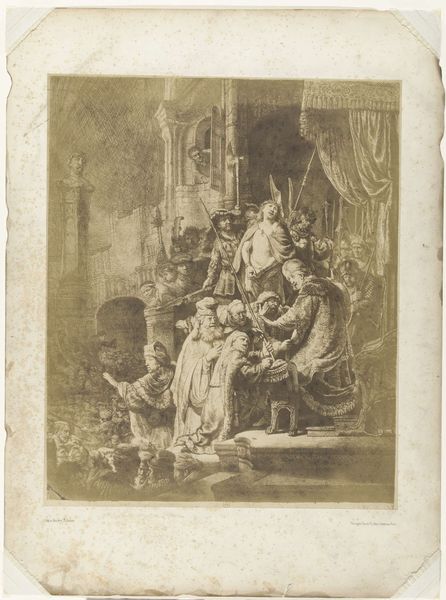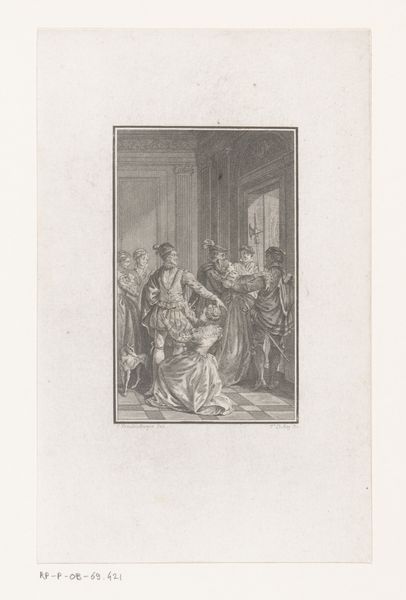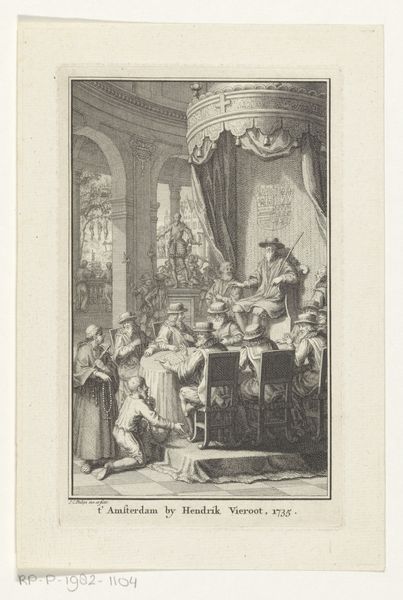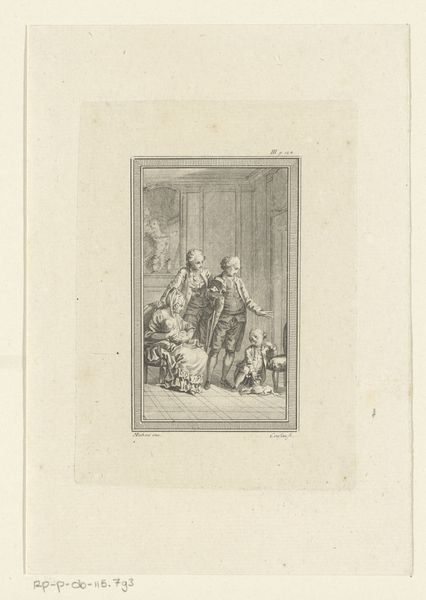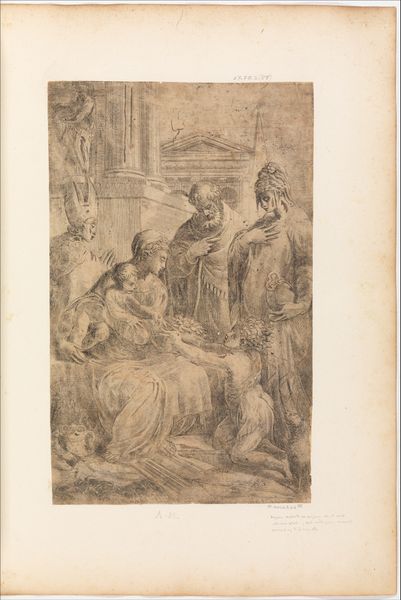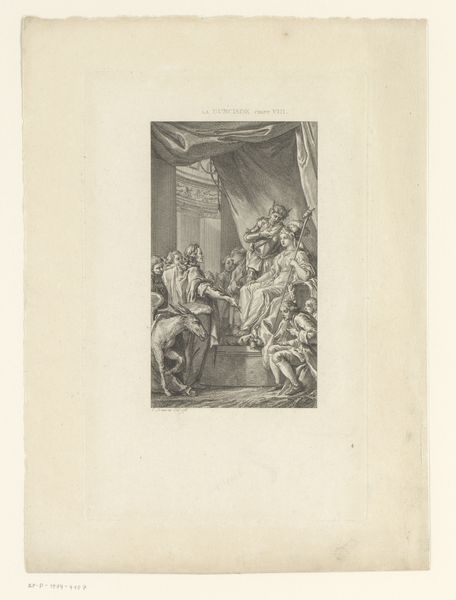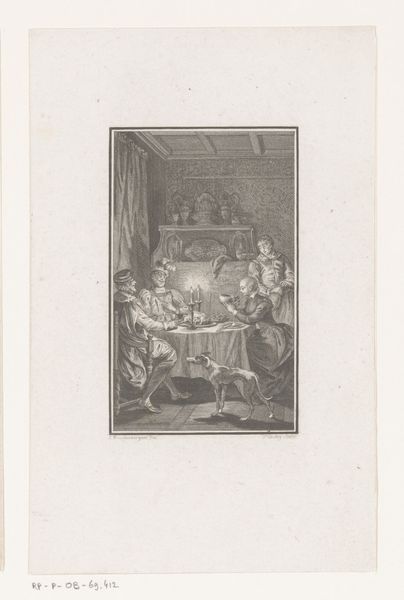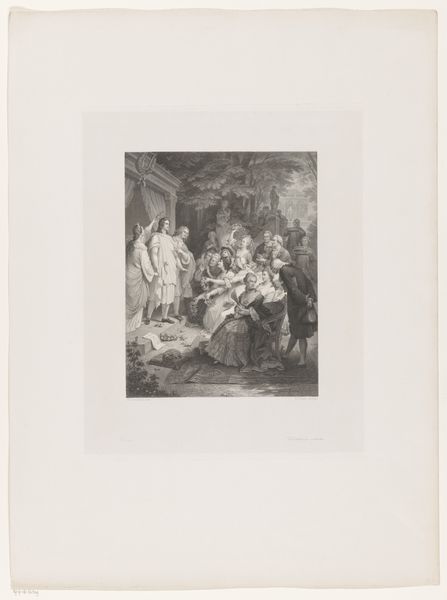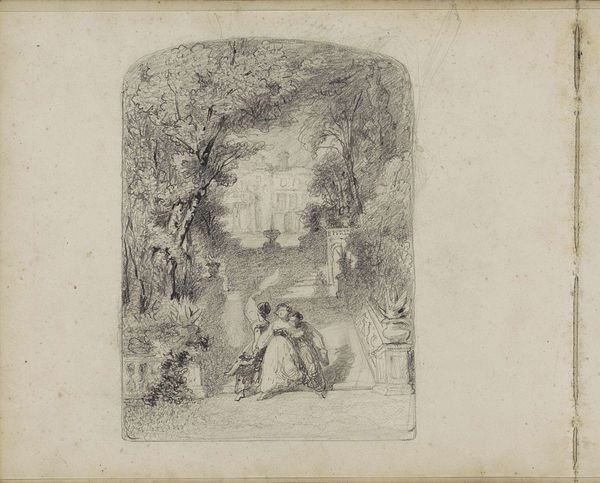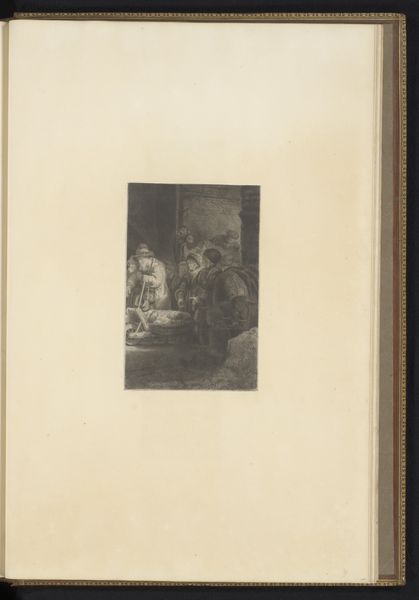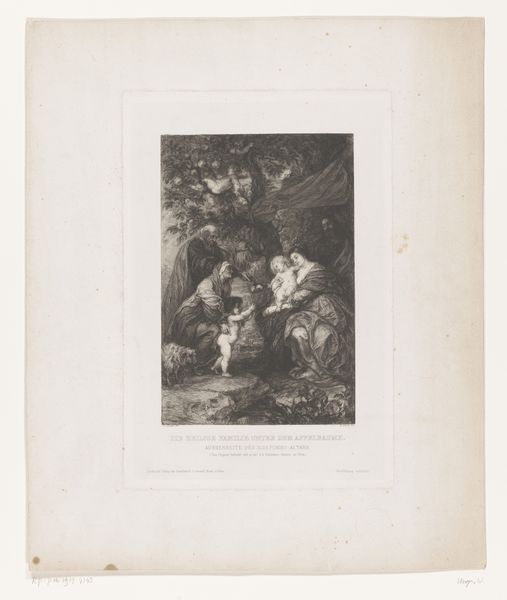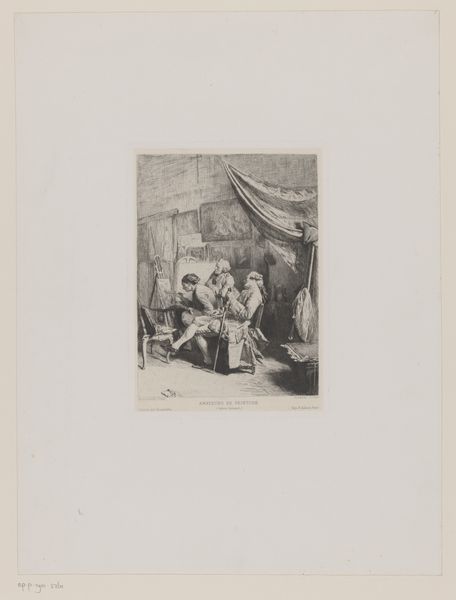
painting
#
portrait
#
painting
#
impressionism
#
genre-painting
#
realism
Dimensions: height 247 mm, width 200 mm
Copyright: Rijks Museum: Open Domain
Curator: Let's turn our attention now to "Fotoreproductie van schilderij door Albert Neuhuys," created sometime between 1850 and 1900 by Atelier Herz. Editor: Immediately, the image feels quiet and domestic; I’m struck by how softly lit it is, almost sepia-toned, adding to its dreamlike quality. Curator: The limited tonal range is intriguing. I wonder about the technical process, perhaps it began as a painting rendered as a photogravure to achieve this atmospheric effect. The rough surface suggests an interest in the hand of the artisan in what is still technically a photographic print. Editor: Right. The iconography here is powerfully evocative. The mother stands central, offering food to her children while one daughter gazes outwards, into the light streaming from the window. It pulls at feelings of longing, generational ties, hope. Curator: Note the attention to material details within this simple scene, though; the texture of the woman's dress, the wooden implements hanging from the rafters. It suggests a concern with truthfully rendering working-class domestic life, moving the emphasis from a traditional portrait to what has become known as a genre scene. Editor: Yes, the inclusion of those elements root the work in a very specific time and place, but for me, the symbolic content resonates more profoundly. The window acting as a frame, leading the young girl to imagine life outside of this kitchen—the dreams that might one day liberate her. This speaks to the powerful mythology of domesticity, then and now. Curator: Interesting to think about its potential contemporary consumption too. It becomes, at once, both document of working-class material constraints, and idealized aesthetic object through artistic reproduction. We, ourselves, participate in this paradox of valuation. Editor: Ultimately, for me, this is about the persistent human need to find beauty and meaning, even – and perhaps especially – within the most commonplace aspects of our lives. Curator: For me, it’s also a fascinating comment on how the materials and their means of manipulation transform reality and alter perception across social class.
Comments
No comments
Be the first to comment and join the conversation on the ultimate creative platform.
